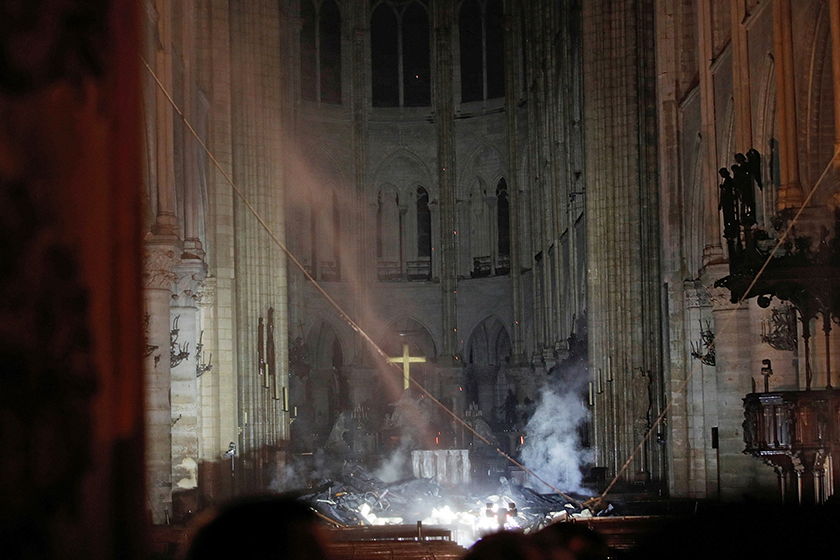
VATICAN CITY (CNS) — As people in Paris and around the world watched in horror as flames consumed the roof of Notre Dame Cathedral, the blaze also stirred genuine emotions that could come only from witnessing the loss of beauty, art historian Elizabeth Lev said.
CONTRIBUTE TO REBUILDING NOTRE DAME
National Shrine of the Immaculate Conception
The April 15 fire that engulfed the centuries-old Gothic cathedral showed that although Notre Dame was a formidable structure, it was “vulnerable at the same time, much like Our Lady at the foot of the cross,” Lev told Catholic News Service April 17.
“People saw a thing of beauty — universally recognized beauty — hovering on the brink of destruction and realized that beauty does matter to us after all,” she said.
Up to 500 firefighters battled for 15 hours to save the cathedral after flames erupted in the structure’s attic. The blaze quickly consumed two-thirds of the 13th-century oak roof and brought down the cathedral’s 300-foot spire. Authorities said much of the cathedral’s wooden interior was destroyed and its masonry was seriously scorched.
Lev told CNS that as a child, she admired the stunning edifice from afar and when dreaming of moving to Europe, “I imagined it would be the backdrop to my life.”
“I studied it, then went to see it, and, a few years ago, I started lecturing on it. I’ve gone to Mass there and venerated the crown of thorns. It was like having a pen pal, then becoming friends but then being abruptly and brutally separated,” she said.
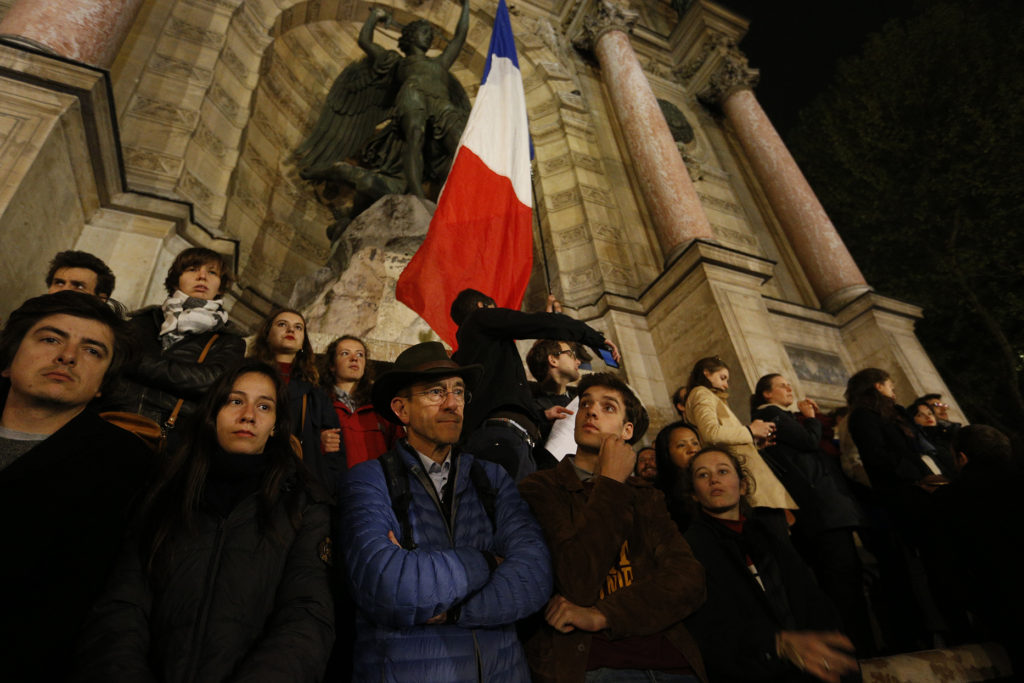
Regarded as a crown jewel of medieval Gothic architecture, Notre Dame Cathedral stands “in the geographical center of the city” and bore witness to major events, including the Reformation, the French Revolution, the Paris Riots and the Nazi occupation of France during World War II, Lev explained.
“It has welcomed kings and popes, saints and sinners, as the ‘house of God and the abode of men,’” she said. “It is a symbol of the enduring presence of faith, despite every kind of onslaught.”
Much like the great pyramids of Giza or the Pantheon in Rome, Lev said, Notre Dame Cathedral stood as a testament to how humanity can “create astonishing things” when people “direct their ingenuity to something outside themselves.”
“It reminds us that we are greater than our brief mortal lives and the petty pursuits that fill it,” she said. “But when human beings dedicate themselves to the divine, the transcendent, the experience of God redeeming creation, they can make something sublime.”
Steven W. Semes, a professor and director of graduate studies in the Historic Preservation Program at the University of Notre Dame in Indiana, said he was as shocked and pained as everyone watching on television as the building burned April 15.
“Like all historic monuments,” he said, Notre Dame Cathedral is “the result of hundreds and hundreds of years of development” with an initial idea, a long and labor-intensive construction process, design changes, additions, demolitions and remodeling over and over again as fashions and usages change.
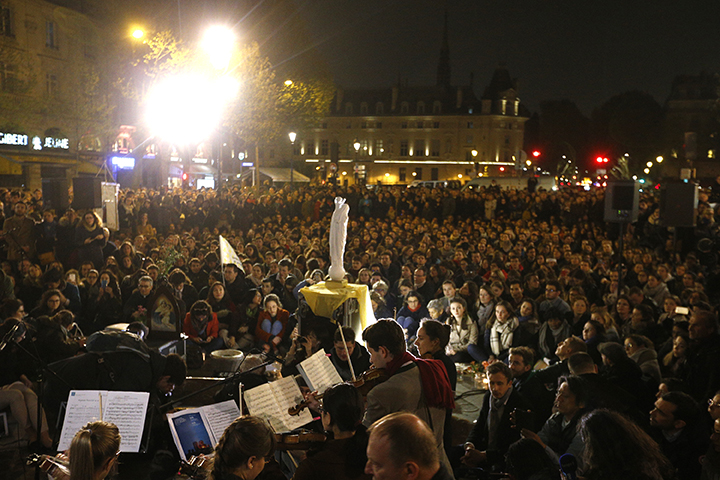
So, from the initial construction, which began in 1160, the cathedral “was transformed multiple times,” he told Catholic News Service in Rome, where he regularly teaches. When one looked at Notre Dame before the fire, “we weren’t seeing the cathedral as it was built, we were seeing it through layers of change.”
“Buildings and cities do change through time,” Semes said. “We wouldn’t go see a painting by Rembrandt that four people had painted over, but we look at almost any historic building and we see something that has been restored multiple times — sometimes restored in a way very faithful to an early state and sometimes not.”
“One thing about buildings and cities is that they are more like natural phenomena than other art works. Think of a forest. You can have a fire in a forest, but then it comes to life again,” he said. “Buildings are resilient.”
“Hope springs from seeing monuments that have endured,” even though they almost never remain unchanged, Semes said.
“A lot of people are feeling today, ‘We can’t do it again’ or ‘It can’t be restored,’” and while that would be true of a painting, the professor said, “we do have the skills to restore this building.”
“Obviously, a big fire has a big impact,” he said, but even for nonbelievers, there is a sensitivity to the fact that Notre Dame Cathedral was not just a treasure of Gothic architecture.
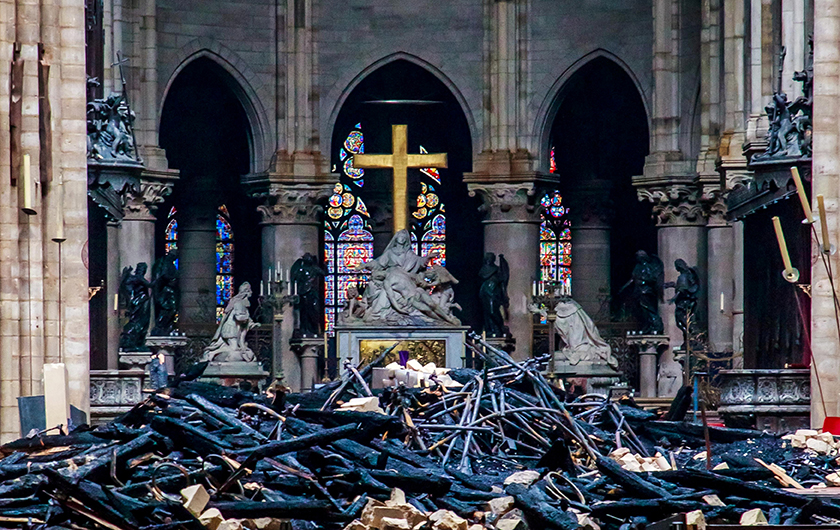
“Notre Dame was truly a work of devotion,” he said. “Think about it — how large the building was compared to everything else in the city, the attention, the loving care that went into making it, ornamenting it and maintaining it. This is truly an act of devotion; it is a kind of sacramental.”
The building as a church “speaks to people,” whether they are believers, he said, pointing to similar reactions in 2015 when a massive earthquake in Nepal toppled Buddhist statues and monuments. “We feel these things even if we are not personally involved in that particular tradition.”
The key to understanding Notre Dame Cathedral was summarized by Paris Archbishop Michel Aupetit in a television interview in the wee hours of April 16: “Why was this beauty built? What jewel was this case meant to contain? Not the crown of thorns (a relic saved from the fire), but a piece of bread that we believe is the body of Christ.”
Pope Francis, in a message April 16 to Archbishop Aupetit, expressed his solidarity with the sadness of Parisians, calling Notre Dame “an architectural jewel of a collective memory, the gathering place for many major events, the witness of the faith and prayer of Catholics in the city.”
The pope also expressed his confidence that the cathedral would be rebuilt and continue its vocation as “a sign of the faith of those who built it, the mother church of your diocese, (and) the architectural and spiritual heritage of Paris, France and humanity.”
Antoine-Marie Izoard, editor of the French Catholic magazine Famille Chretienne, told CNS, “That this happened at the beginning of Holy Week makes it even more striking and calls us to Christian hope.”
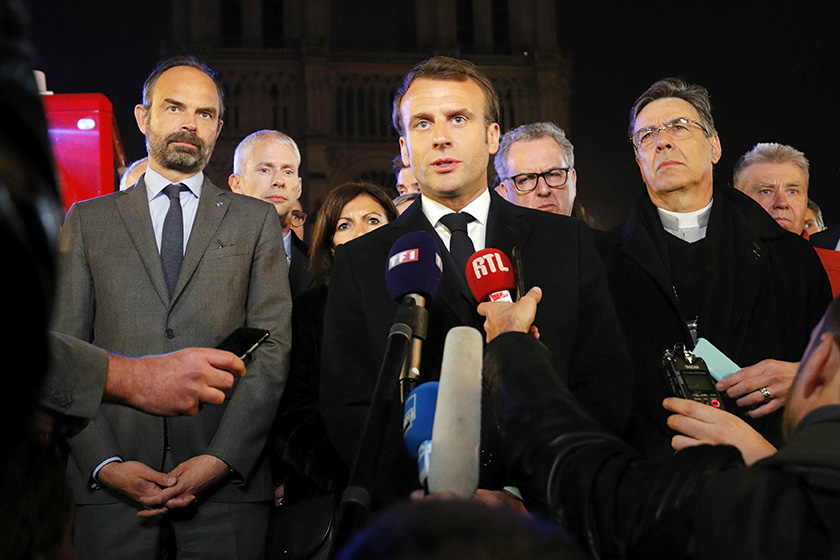
“Last night, Catholics, members of other religions and nonbelievers united around this strong symbol in the heart of Paris,” he said April 16. “It was very striking to see Catholics praying around the cathedral for the firefighters battling the flames.”
Add to that French President Emmanuel Macron’s determination to rebuild, he said, and “we realize once again that the Christian roots of the country are still at the heart of France.”
Italian Cardinal Gianfranco Ravasi, president of the Pontifical Council for Culture, told reporters April 16 that while Notre Dame, like other French cathedrals, is state property, “it remains a living creature in which the liturgy is celebrated, encounters of faith occur and even nonbelievers enter to make a tour of beauty.”
The prayerful, tearful public vigils that took place as the fire burned, he said, demonstrated how “the great cathedrals and basilicas really are living bodies.”
And, the cardinal said, Notre Dame is not just a living sign of religiosity, but is “the heart, the beating heart” of Paris.
Los Angeles Auxiliary Bishop Robert E. Barron, who, as a young priest studied for a doctorate in theology at the Institut Catholique de Paris, spent three years in the French capital and lived blocks away from Notre Dame. He even gave tours of the cathedral to English speakers.
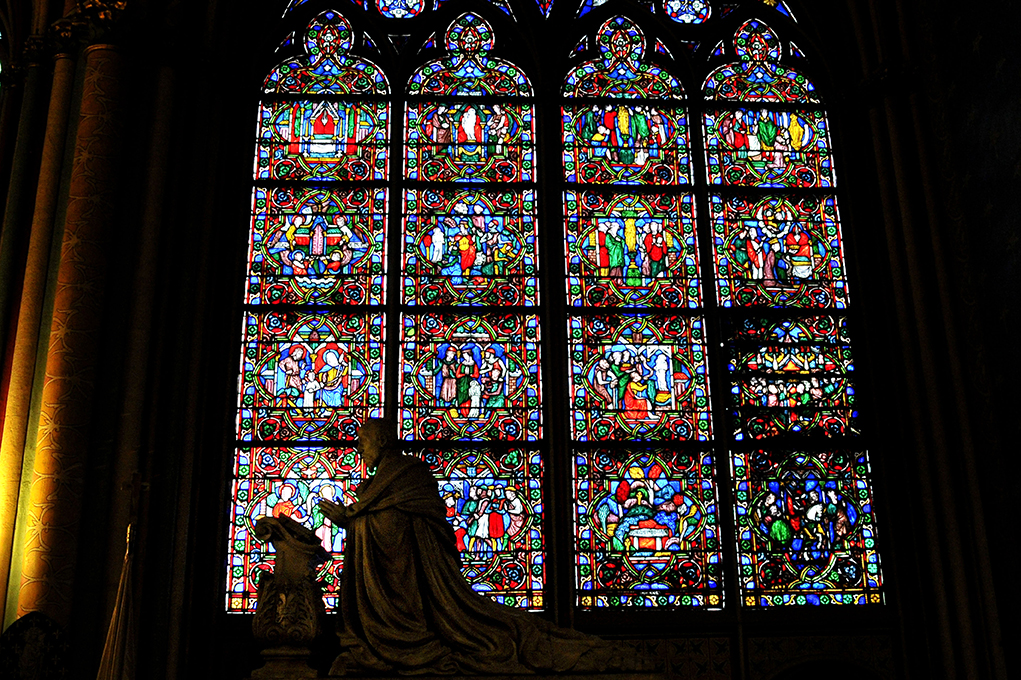
He explained that he has a particular attachment to the cathedral’s north rose window, which he calls a “very important and powerful spiritual symbol” for him.
“I’ve used it in almost all my books, and I talk about it all the time in a spiritual context. These are windows that St. Thomas Aquinas knew and St. Bonaventure knew.”
Bishop Barron also noted while the rest of the world mourned the disturbing images, young Parisians were singing hymns to the cathedral’s patroness, Mary.
“I just think of Our Lady of Sorrows, Mary accompanying Jesus to the cross — especially on Holy Week. How can you not be moved?”
Nevertheless, Bishop Barron expressed hope that in the same way the trials of Holy Week lead to the Resurrection, the tragedy might be an opportunity for God to bring life out of death.
“I can’t help but think, might it awaken within the French people and the people of Europe a deeper sense of connection to the Christian faith, the faith that made that building possible?” Bishop Barron wondered aloud. “Will the loss of it awaken in people a reappreciation of the faith? My hope is yes.”
— By, Catholic News Service. Contributing to this story was Junno Arocho Esteves, Carol Glatz and Cindy Wooden from the Vatican and Pablo Kay from Los Angeles, Kay is editor of ANGELUS, the news outlet of the Archdiocese of Los Angeles.






